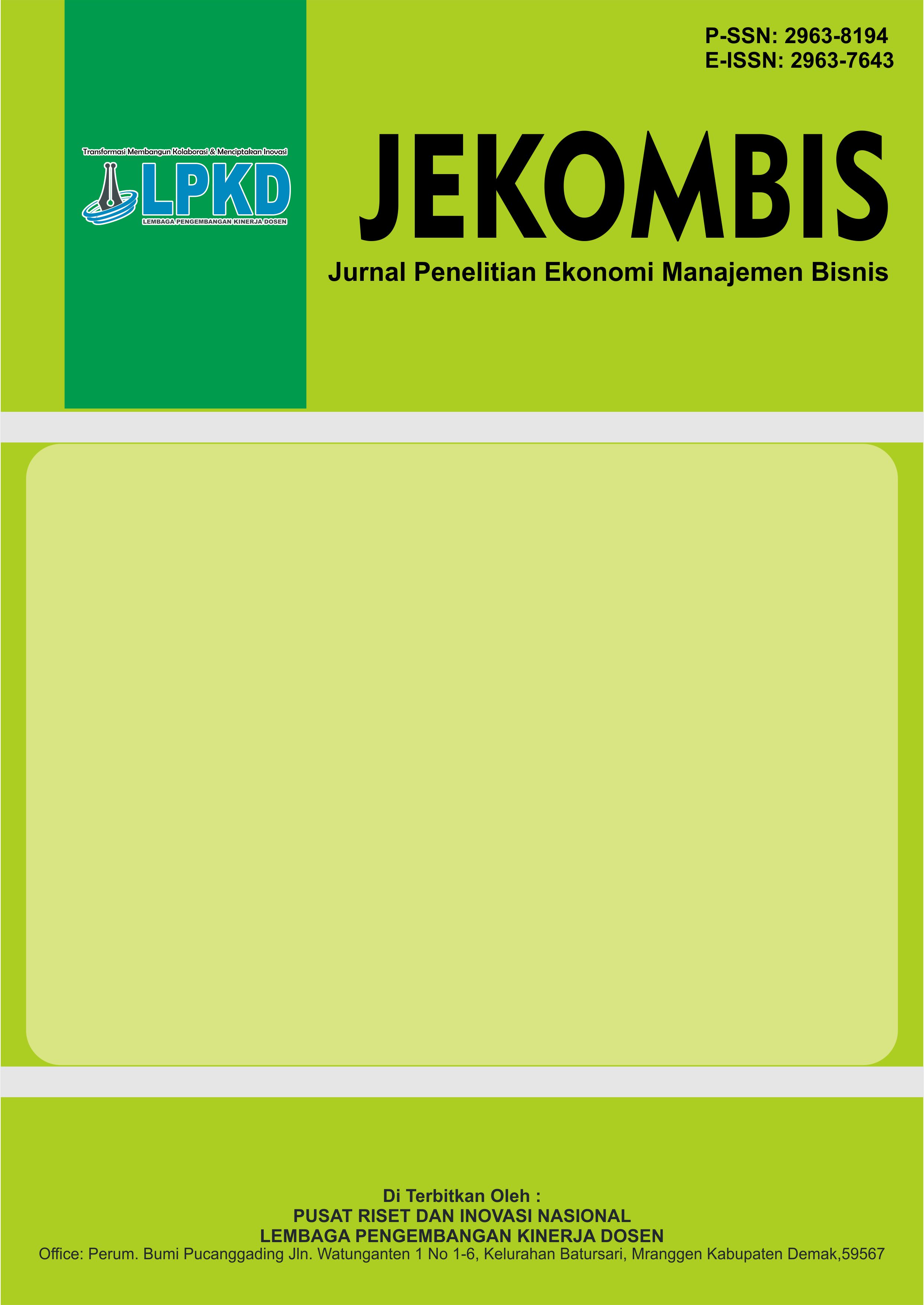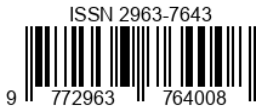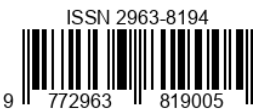Pengaruh Indeks Harga Konsumen terhadap Inflasi di Kota Medan Sumatera Utara Tahun 2024
DOI:
https://doi.org/10.55606/jekombis.v4i2.5009Keywords:
Consumer Price Index, Economic Statistics, Inflation, Medan City, Regression AnalysisAbstract
This study aims to analyze the effect of the Consumer Price Index (CPI) on the inflation rate in Medan City during 2024. Inflation is a key macroeconomic indicator for assessing regional economic stability, and CPI serves as the primary tool to monitor changes in the prices of goods and services consumed by households. This research employs a quantitative approach using monthly time series secondary data sourced from the Central Statistics Agency and Bank Indonesia. The analysis techniques include classical assumption tests (normality, multicollinearity, heteroscedasticity, and autocorrelation) and simple linear regression. The results show that partially, CPI has no significant effect on inflation, with a significance value of 0.136. Simultaneously, the variables also show no significant influence, although the R² value of 18.8% indicates that CPI can explain a small portion of the variation in inflation. These findings suggest that other factors beyond CPI may play a more dominant role in influencing inflation in Medan City. The implications of this study are expected to provide input for local government in formulating more comprehensive inflation control policies based on more relevant macroeconomic variables.
Downloads
References
Ariwibowo, & dkk. (2019). Mudah memahami dan mengimplementasikan ekonomi makro.
Aryansyah, A., dkk. (2025). Dasar-dasar teori inflasi: Dari teori klasik hingga Keynesian. Widina Media Utama.
Badan Pusat Statistik (BPS). (2022–2023). Diakses dari https://medankota.bps.go.id/id
Badan Pusat Statistik Kota Lubuk Linggau. (2022). Dafpus dari indeks harga konsumen dan inflasi Kota Lubuk Linggau 2022. Badan Pusat Statistik Kota Lubuk Linggau.
Hutabarat, T. (2020). Manajemen operasi dan produktivitas. Penerbit Salemba Empat.
Kementerian Perindustrian Republik Indonesia. (2023). Transformasi digital industri 4.0 di Indonesia. Kemenperin.
Mailin, Rambe, G., Ar-Ridho, A., & Candra. (2022). Teori media/teori difusi inovasi. Jurnal XYZ, 6(2), 1–xx.
Megawati, S. Pd., M.Pd. (t.t.). Analisa produktivitas: Konsep dasar dan teknik pengukuran (Karya Fika). Umsida Press.
Muttaqin, A. R., Wibawa, A. P., & Nabila, K. (2021). Inovasi digital untuk masyarakat yang lebih cerdas 5.0: Analisis tren teknologi informasi dan prospek masa depan. Jurnal Inovasi Teknik dan Edukasi Teknologi, 1(12), 880–886. https://doi.org/10.17977/um068v1i122021p880-886
Sattar, & Wijayanti, S. K. (2018). Buku ajar teori ekonomi makro. CV Budi Utama.
Setiani, T., & Andini, R. (2023). Pengaruh rasio solvabilitas dan rasio aktivitas perusahaan terhadap rasio profitabilitas perusahaan pada sub sektor makanan dan minuman yang terdaftar di Bursa Efek Indonesia periode 2020–2022. Jurnal Akuntansi, 68–81.
Situmorang, D. (2022). Teknologi dan inovasi dalam bisnis modern. Alfabeta.
Sutawijaya, A. (2019). Produktivitas dan efisiensi dalam manajemen operasi. Penerbit Gramedia.
Suyanto, A. (2020). Manajemen strategi: Inovasi dan teknologi dalam bisnis. Gadjah Mada University Press.
Tambunan, T. (2021). Produktivitas dan daya saing industri di Indonesia. IPB Press.
Downloads
Published
How to Cite
Issue
Section
License
Copyright (c) 2025 Jurnal Penelitian Ekonomi Manajemen dan Bisnis

This work is licensed under a Creative Commons Attribution-ShareAlike 4.0 International License.







